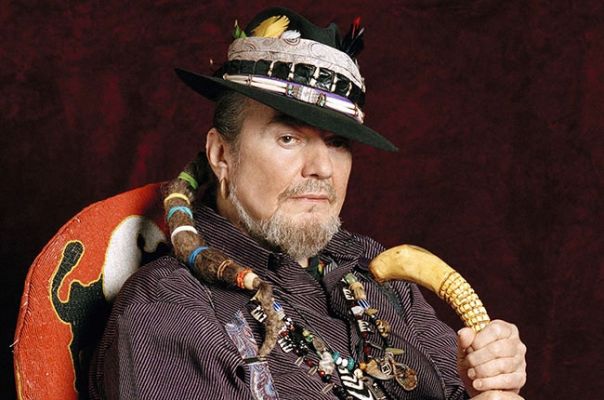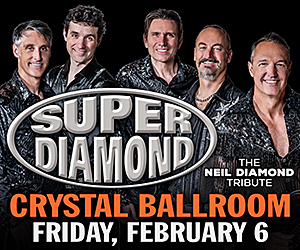Dr. John, the six-time Grammy Award winner whose gritty voodoo-inspired stage persona and whimsical way of speaking were as beloved in New Orleans as his piano-playing, has died. He was 77 years old.
His daughter Carla Quinn confirmed Dr. John’s death to The New Orleans Advocate, saying her father died of a heart attack Thursday (June 6).
Dr. John, whose given name was Malcolm John Rebennack Jr. and who was also called Mac, was born in New Orleans, a place that schooled him in the jazz, R&B, rock and roll, jump blues, funk and Mardi Gras Indian sounds that would come to shape his music. Mr. Rebennack was a man whose style and outlook were shaped, too, by voodoo, that mysterious and mystical spiritualism that developed from the city’s Afro-Caribbean roots. And in New Orleans, that meant he stood out so much he fit right in.
Mr. Rebennack was born big and a month late — just before Thanksgiving 1941 — which gave his mother license to call the young tot her “Thanksgiving turkey,” according to “Under a Hoodoo Moon,” Mr. Rebennack’s autobiography (St. Martin’s Griffin, 1994). His earliest years were spent with his family shuffling from home to home until they landed in the 3rd Ward, and it was his grandfather who first introduced the would-be pianist to music.
(Note: As writer John Wirt reported for NOLA.com, contrary to the many sources that cite his birthdate as Nov. 21, 1940, Rebennack’s real birthday is Nov. 20, 1941. The Times-Picayune’s Records of the Day column, published Nov. 27, 1941, lists the birth of M.J. Rebennack, a boy, at Baptist Hospital.)
In an early memory recounted in “Under a Hoodoo Moon,” Mr. Rebennack writes that he would listen to his grandfather, who performed in minstrel shows as a younger man, sing: “I been hoodooed/ I been hoodooed / Somebody done put a jinx on me.”
His aunt Andre, who was tuned into what was hot at the time, became his first piano teacher, playing “St. James Infirmary” and “Everybody Loves My Baby.”
The music stayed with him, and a version of that song later landed on “In the Right Place.”
As he grew up, Mr. Rebennack would favor nightclubs, drugs and trouble-making over schooling, picking up a musical education instead as his ear turned to New Orleans’ natural teachers on stages and in barrooms around the city, like the Pepper Pot and the Cadillac Club. In those hazy venues and in local recording studios, he met Professor Longhair, Papa Celestin, Dave Bartholomew, the Basin Street Six, Walter “Papoose” Nelson, Roy Montrell and others.
“Yeah, I studied everybody that I could study,” he told music writer John Wirt in an April 2017 feature. “Hey, they was great pardners of mine. Back then, that was life.”
As helpful as that kind of studying was, Mr. Rebennack ended up getting kicked out of Jesuit High School, but he spent much of the 1950s recording and playing guitar with Professor Longhair, Art Neville and Frankie Ford, among others.
The switch of his focus to guitar in his adolescence after playing piano as a boy came because “every guitarist I knew could get work easy,” Mr. Rebennack told Smithsonian magazine in a 2009 interview. But strumming a guitar wouldn’t last.
“Around 1960, I got shot in my finger before a concert. A guy was pistol whipping Ronnie Barron, our vocalist. Ronnie was just a kid and his mother had told me, ‘You better look out for my son,’” he told the magazine. “Oh god, that was all I was thinking about. I tried to stop the guy, I had my hand over the barrel and he shot.”
The next year, he was busted on drug charges and was sent to federal prison in Fort Worth, Texas, according to Mark Kemp’s “Dixie Lullaby: A Story of Music, Race and New Beginnings in a New South” (Simon and Schuster, 2007).
When he got out in 1965, he booked it to Los Angeles, where Mr. Rebennack became The Nite Tripper, cultivating his infatuation with voodoo and his own offbeat mysticism while also serving as a session musician for artists like Sonny & Cher and Frank Zappa.
A reluctant frontman, Mr. Rebennack was convinced to pick up that mantle by his conga player, according to the Smithsonian interview, and he borrowed the name “Dr. John” from the story of an 1800s “free man of color … and a gris gris man.”
His first album, 1968’s aptly-titled “Gris-Gris,” was intended “to keep New Orleans gris gris alive,” he told the magazine. The Mardi Gras, West African and psychadelic chanting sounds were a hit with the long-haired hippies Mr. Rebennack knew in California, and the album ranks on Rolling Stone magazine’s list of the 500 Greatest Albums of All Time.
The album launched a long career in which the Nite Tripper and Mr. Rebennack would converge, most obviously in the man’s New Orleans-centric patois that, when transcribed, may confound an English educator but would delight a listener.
When Wirt, the music writer who interviewed him for an April 2017 story, asked Mr. Rebennack what he hoped to still achieve in his career, he said, “"I’m tripping through the shortcuts of existment to feel it and that’s good."
But in the 1970s, Mr. Rebennack was taking no shortcuts. His musical oeuvre grew to include another handful of records like “Dr. John’s Gumbo,” a collection of covers of New Orleans standard that helped introduce the world to Mr. Rebennack’s hometown sounds and is also listed on Rolling Stone’s top 500 albums, and he worked with Allen Toussaint and The Meters to produce the funky “In the Right Place,” which gave him the Top 20 hit “Right Place Wrong Time.”
His work garnered no shortage of fans around the world, including his fellow musicians, which prompted opportunities like a performance at The Band’s final concert in 1976 and session work or collaborations with The Rolling Stones, Neil Diamond, James Taylor and Carly Simon, Lou Reed, Leon Redbone, Van Morrison, Christina Aguilera, B.B. King, Ringo Starr, The Black Keys and dozens of others. Mr. Rebennack’s work also been widely sampled, like on Beck’s “Loser” and P.M. Dawn’s 1991 “Comatose,” according to Rolling Stone.
The 1980s saw Mr. Rebennack come to a reckoning point with his addiction to heroin. He told Bomb Magazine in 1990 that he had been on methadone maintenance for about five years and that, in 1989, he’d entered rehab.
“I’m doin’ what I do to try to stay clean. But dope fiend, heroin addict, junkie, the idea’s that I’m recovering from it. And I enjoyed it,” he told interviewer Stanley Moss. “There’s a lot of beautiful sides to life I was missing when I was out there ripping and running. I’m real grateful to be clean again.”
His 2008 album, “City That Care Forgot,” offered his gritty meditations on Hurricane Katrina and the official response to the disaster that wreaked havoc on his hometown.
“None of my work has been as aggravated or disgusted as this record. I had never felt the way I do now, seeing New Orleans and the state of Louisiana disappearing,” he told Smithsonian magazine in the 2009 interview. “We've given the world jazz, our kind of blues, a lot of great food, a lot of great things. It's so confusing to look at things these days.”
In his most recent years, Mr. Rebennack partnered with trombonist Sarah Morrow, who served as the art director of his backing band, The Nite Trippers, after moving up from a role in his previous band since 2012, for about three years.
In honor of Mr. Rebennack’s deeply influential well of music, which over the years grew to include nearly three dozen of his own albums, the Saenger Theatre hosted the sold-out “The Musical Mojo of Dr. John: A Celebration of Mac and His Music,” a sold out tribute for and featuring the man himself. Guest artists that night included Bruce Springsteen, John Fogerty, Widespread Panic, Mavis Staples, Terence Blanchard and Jimmie Vaughan.
In 2016, Mr. Rebennack unveiled a new band, The Gris-Gris Krewe, which replaced Morrow as musical director with Roland Guerin and featured drummer Herlin Riley in its ranks.








